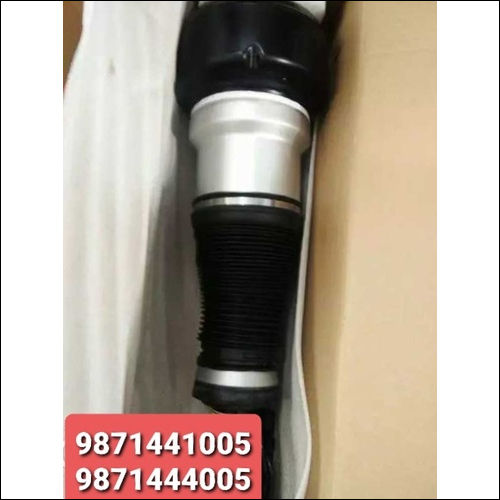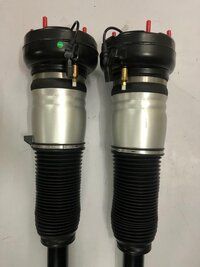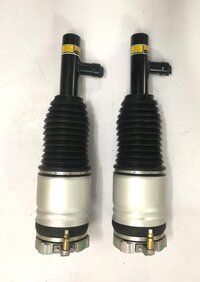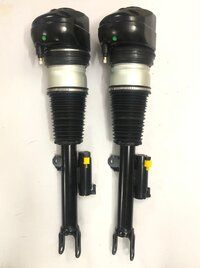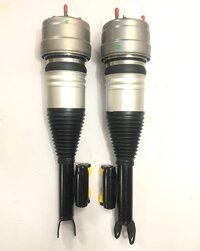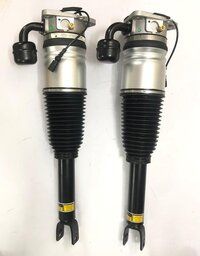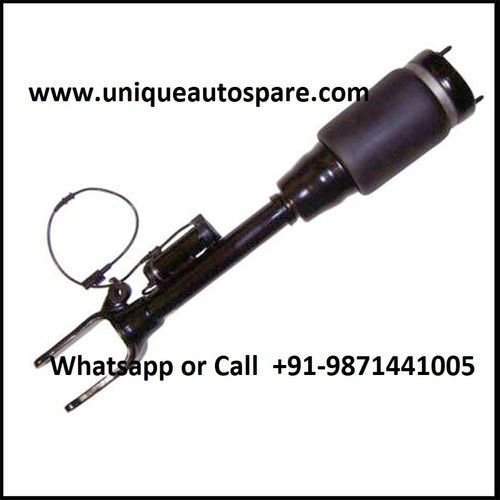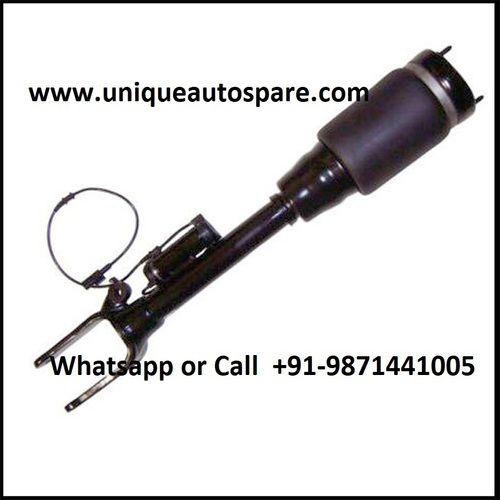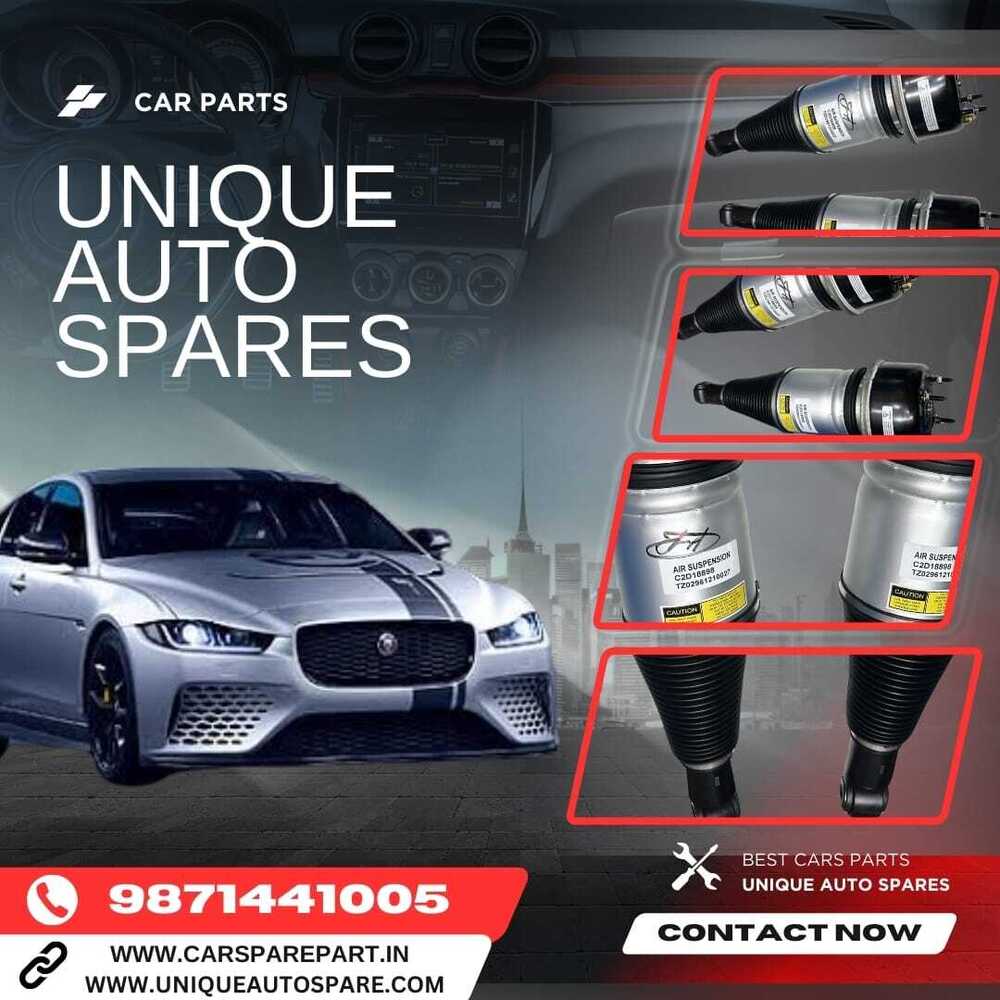Audi Car Front Airmatic shocker
Product Details:
- For Use In Audi A6, Audi A8 and Audi Q7
- Model No 2018
- Warranty 1 yers
- Product Type Airmatic Shocker and Airmatic Balloon
- Finish Good
- Click to View more
X
Audi Car Front Airmatic shocker Price And Quantity
- 1 Piece
Audi Car Front Airmatic shocker Product Specifications
- Good
- Airmatic Shocker and Airmatic Balloon
- Audi A6, Audi A8 and Audi Q7
- 1 yers
- 2018
Audi Car Front Airmatic shocker Trade Information
- 1000 Piece Per Day
- 1 Days
- cardboard box and cover with sack
- All India
Product Description
The Mercedes-Benz ML 350 is a popular mid-size luxury SUV, and its suspension system is crucial for ensuring a smooth and comfortable ride. Here are the main components of the ML 350's suspension system:
1. Struts and Shock Absorbers:
- Front Struts: These are combined spring and shock absorber units that support the front of the vehicle.
- Rear Shock Absorbers: These dampen the ride in the rear of the vehicle, controlling the oscillations of the rear suspension.
2. Springs:
- Coil Springs: These are typically found in the front and rear and provide support and cushioning.
- Air Springs: Some models might be equipped with air suspension, which uses air springs instead of coil springs.
3. Control Arms:
- Upper and Lower Control Arms: These connect the wheels to the chassis and allow for up and down movement while maintaining wheel alignment.
- Bushings: These are found at the pivot points of the control arms and reduce friction and wear.
4. Ball Joints:
- These allow the control arms to move up and down while enabling the wheels to steer.
5. Stabilizer Bar (Sway Bar):
- Front and Rear Stabilizer Bars: These bars reduce body roll during cornering.
- Stabilizer Links: These connect the stabilizer bar to the suspension components.
6. Tie Rods:
- Inner and Outer Tie Rods: These connect the steering rack to the wheels, allowing for steering input to be transmitted to the wheels.
7. Wheel Bearings and Hubs:
- Wheel Bearings: These allow the wheels to rotate smoothly.
- Wheel Hubs: These house the wheel bearings and provide the mounting point for the wheels.
8. Control Modules and Sensors:
- Electronic Control Modules: These may be part of an adaptive suspension system, adjusting the suspension settings based on driving conditions.
- Sensors: These can include ride height sensors, accelerometers, and others that provide data to the suspension control module.The term "Airmatic" is associated with Mercedes-Benz, referring to their air suspension system. However, Audi also offers similar air suspension systems, often referred to as "Adaptive Air Suspension" or just "Air Suspension."
Overview of Audi Air Suspension (Airmatic Equivalent):
-
Functionality:
- The air suspension system in Audi vehicles uses air springs instead of traditional coil springs.
- It allows for automatic adjustment of the vehicleïs ride height and damping settings based on driving conditions, speed, and driver preferences.
- The system improves ride comfort, handling, and adaptability to various terrains.
-
Components:
- Air Springs (Shocks/Struts): These replace conventional springs and can be inflated or deflated to change the ride height.
- Compressor: Provides the necessary air pressure to the air springs.
- Air Lines: Connect the compressor to the air springs, allowing for the transfer of air.
- Height Sensors: Detect the current height of the vehicle and send this information to the control unit.
- Control Module: Manages the system, adjusting the ride height and damping based on input from the driver and sensors.
-
Modes and Features:
- Automatic Leveling: The system automatically adjusts the vehicle's height to maintain an even stance, regardless of the load.
- Adjustable Ride Height: Drivers can manually choose between different ride heights, such as "Comfort," "Dynamic," or "Offroad" modes, depending on the model.
- Sport Mode: Typically lowers the vehicle for improved handling at high speeds.
- Comfort Mode: Raises the vehicle slightly for a smoother, more cushioned ride.
-
Benefits:
- Improved Comfort: Smoothes out road imperfections and provides a plush ride.
- Better Handling: Adjusts the vehicle's height for better aerodynamics and stability at high speeds.
- Versatility: Allows the vehicle to adapt to various driving conditions, from smooth highways to rough terrains.
-
Common Issues:
- Air Leaks: Over time, air springs or air lines can develop leaks, leading to a sagging suspension.
- Compressor Failure: The compressor can wear out, leading to a failure in maintaining proper air pressure.
- Sensor Malfunctions: Height sensors may fail, causing incorrect ride height adjustments.
Replacing or repairing the air suspension system can be complex and expensive. Regular maintenance and addressing any issues early can help prolong the life of the.
-
Enter Buying Requirement Details
Other Products in 'Car Airmatic Shocker Suspension' category
Back to top

